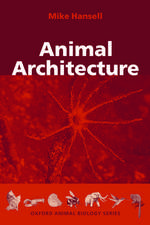From Animals to Animats 10: 10th International Conference on Simulation of Adaptive Behavior, SAB 2008, Osaka, Japan, July 7-12, 2008, Proceedings: Lecture Notes in Computer Science, cartea 5040
Editat de Minoru Asada, John C. T. Hallam, Jean-Arcady Meyer, Jun Tanien Limba Engleză Paperback – 17 iun 2008
Din seria Lecture Notes in Computer Science
- 20%
 Preț: 1061.55 lei
Preț: 1061.55 lei - 20%
 Preț: 307.71 lei
Preț: 307.71 lei - 20%
 Preț: 438.69 lei
Preț: 438.69 lei - 20%
 Preț: 645.28 lei
Preț: 645.28 lei -
 Preț: 410.88 lei
Preț: 410.88 lei - 15%
 Preț: 580.46 lei
Preț: 580.46 lei - 17%
 Preț: 427.22 lei
Preț: 427.22 lei - 20%
 Preț: 596.46 lei
Preț: 596.46 lei -
 Preț: 381.21 lei
Preț: 381.21 lei - 20%
 Preț: 353.50 lei
Preț: 353.50 lei - 20%
 Preț: 1414.79 lei
Preț: 1414.79 lei - 20%
 Preț: 309.90 lei
Preț: 309.90 lei - 20%
 Preț: 583.40 lei
Preț: 583.40 lei - 20%
 Preț: 1075.26 lei
Preț: 1075.26 lei - 20%
 Preț: 310.26 lei
Preț: 310.26 lei - 20%
 Preț: 655.02 lei
Preț: 655.02 lei - 20%
 Preț: 580.93 lei
Preț: 580.93 lei - 20%
 Preț: 340.32 lei
Preț: 340.32 lei - 15%
 Preț: 438.59 lei
Preț: 438.59 lei - 20%
 Preț: 591.51 lei
Preț: 591.51 lei - 20%
 Preț: 649.49 lei
Preț: 649.49 lei - 20%
 Preț: 337.00 lei
Preț: 337.00 lei -
 Preț: 449.57 lei
Preț: 449.57 lei - 20%
 Preț: 607.39 lei
Preț: 607.39 lei - 20%
 Preț: 1024.44 lei
Preț: 1024.44 lei - 20%
 Preț: 579.30 lei
Preț: 579.30 lei - 20%
 Preț: 763.23 lei
Preț: 763.23 lei - 20%
 Preț: 453.32 lei
Preț: 453.32 lei - 20%
 Preț: 575.48 lei
Preț: 575.48 lei - 20%
 Preț: 585.88 lei
Preț: 585.88 lei - 20%
 Preț: 825.93 lei
Preț: 825.93 lei - 20%
 Preț: 763.23 lei
Preț: 763.23 lei - 17%
 Preț: 360.19 lei
Preț: 360.19 lei - 20%
 Preț: 1183.14 lei
Preț: 1183.14 lei - 20%
 Preț: 340.32 lei
Preț: 340.32 lei - 20%
 Preț: 504.57 lei
Preț: 504.57 lei - 20%
 Preț: 369.12 lei
Preț: 369.12 lei - 20%
 Preț: 583.40 lei
Preț: 583.40 lei - 20%
 Preț: 343.62 lei
Preț: 343.62 lei - 20%
 Preț: 350.21 lei
Preț: 350.21 lei - 20%
 Preț: 764.89 lei
Preț: 764.89 lei - 20%
 Preț: 583.40 lei
Preț: 583.40 lei -
 Preț: 389.48 lei
Preț: 389.48 lei - 20%
 Preț: 341.95 lei
Preț: 341.95 lei - 20%
 Preț: 238.01 lei
Preț: 238.01 lei - 20%
 Preț: 538.29 lei
Preț: 538.29 lei
Preț: 653.46 lei
Preț vechi: 768.78 lei
-15% Nou
Puncte Express: 980
Preț estimativ în valută:
125.05€ • 130.39$ • 103.93£
125.05€ • 130.39$ • 103.93£
Carte tipărită la comandă
Livrare economică 21 martie-04 aprilie
Preluare comenzi: 021 569.72.76
Specificații
ISBN-13: 9783540691334
ISBN-10: 3540691332
Pagini: 552
Ilustrații: XIII, 530 p.
Dimensiuni: 155 x 235 x 30 mm
Greutate: 0.78 kg
Ediția:2008
Editura: Springer Berlin, Heidelberg
Colecția Springer
Seriile Lecture Notes in Computer Science, Lecture Notes in Artificial Intelligence
Locul publicării:Berlin, Heidelberg, Germany
ISBN-10: 3540691332
Pagini: 552
Ilustrații: XIII, 530 p.
Dimensiuni: 155 x 235 x 30 mm
Greutate: 0.78 kg
Ediția:2008
Editura: Springer Berlin, Heidelberg
Colecția Springer
Seriile Lecture Notes in Computer Science, Lecture Notes in Artificial Intelligence
Locul publicării:Berlin, Heidelberg, Germany
Public țintă
ResearchCuprins
The Animat Approach to Adaptive Behaviour.- Extended Homeostatic Adaptation: Improving the Link between Internal and Behavioural Stability.- Evolution of Valence Systems in an Unstable Environment.- Flexible Control Mechanism for Multi-DOF Robotic Arm Based on Biological Fluctuation.- Neural Noise Induces the Evolution of Robust Behaviour by Avoiding Non-functional Bifurcations.- Integration of an Omnidirectional Visual System with the Control Architecture of Psikharpax.- Evolution.- Stability of Coordination Requires Mutuality of Interaction in a Model of Embodied Agents.- Internal and External Memory in Neuroevolution for Learning in Non-stationary Problems.- Evolving Vision Controllers with a Two-Phase Genetic Programming System Using Imitation.- Embodiment and Perceptual Crossing in 2D.- Navigation and Internal World Models.- Adaptive Optimal Control for Redundantly Actuated Arms.- Monostable Controllers for Adaptive Behaviour.- Bifurcation Angles in Ant Foraging Networks: A Trade-Off between Exploration and Exploitation?.- Episodes in Space: A Modeling Study of Hippocampal Place Representation.- Modelling the Cortical Columnar Organisation for Topological State-Space Representation, and Action Planning.- Adaptive Olfactory Encoding in Agents Controlled by Spiking Neural Networks.- Theta Phase Coding and Acetylcholine Modulation in a Spiking Neural Network.- Interest of Spatial Context for a Place Cell Based Navigation Model.- Linked Local Visual Navigation and Robustness to Motor Noise and Route Displacement.- Second Order Conditioning in the Sub-cortical Nuclei of the Limbic System.- Perception and Control.- Synthesising Novel Movements through Latent Space Modulation of Scalable Control Policies.- Incremental Evolution of Animats’ Behaviors as a Multi-objectiveOptimization.- Integrating Epistemic Action (Active Vision) and Pragmatic Action (Reaching): A Neural Architecture for Camera-Arm Robots.- Neural Coding in the Dorsal Visual Stream.- Learning and Adaptation.- Modeling the Bat LSO Tonotopical Map Refinement during Development.- A Reinforcement Learning Technique with an Adaptive Action Generator for a Multi-robot System.- A Multi-cellular Developmental System in Continuous Space Using Cell Migration.- Toward a Theory of Embodied Statistical Learning.- Closing the Sensory-Motor Loop on Dopamine Signalled Reinforcement Learning.- Mutual Development of Behavior Acquisition and Recognition Based on Value System.- Cognition, Emotion and Behaviour.- Improving Situated Agents Adaptability Using Interruption Theory of Emotions.- Dynamical Systems Account for Meta-level Cognition.- A Computational Model of the Amygdala Nuclei’s Role in Second Order Conditioning.- Acquiring a Functionally Compositional System of Goal-Directed Actions of a Simulated Agent.- Learning to Generalize through Predictive Representations: A Computational Model of Mediated Conditioning.- Detection of Weak Signals by Emotion-Derived Stochastic Resonance.- The Influence of Asynchronous Dynamics in the Spatial Prisoner’s Dilemma Game.- A Study of Off-Line Uses of Anticipation.- Collective and Social Behaviours.- An Individual-Based Model of Task Selection in Honeybees.- Distributed Adaptation in Multi-robot Search Using Particle Swarm Optimization.- Homeotaxis: Coordination with Persistent Time-Loops.- Noise-Induced Adaptive Decision-Making in Ant-Foraging.- Division of Labour in Self-organised Groups.- Social Control of Herd Animals by Integration of Artificially Controlled Congeners.- Aggregating Robots Compute: An Adaptive Heuristic for the EuclideanSteiner Tree Problem.- Emergence of Interaction among Adaptive Agents.- Adaptive Behaviour in Language and Communication.- Acquisition of Human-Robot Interaction Rules via Imitation and Response Observation.- On Modeling Proto-Imitation in a Pre-associative Babel.- Applied Adaptive Behaviour.- Evolution of General Driving Rules of a Driving Agent.- BehaviorSim: A Learning Environment for Behavior-Based Agent.- Adaptive Behavioural Modulation and Hysteresis in an Analogue of a Kite Control Task.- Self-adaptive Agent-Based Dynamic Scheduling for a Semiconductor Manufacturing Factory.
Textul de pe ultima copertă
This book constitutes the refereed proceedings of the 10th International Conference on Simulation of Adaptive Behavior, SAB 2008, held in Osaka, Japan in July 2008.
The 30 revised full papers and 21 revised poster papers presented were carefully reviewed and selected from 110 submissions. The papers are organized in topical sections on the animat approach to adaptive behaviour, evolution, navigation and internal world models, perception and control, learning and adaptation, cognition, emotion and behaviour, collective and social behaviours, adaptive behaviour in language and communication, and applied adaptive behaviour.
The 30 revised full papers and 21 revised poster papers presented were carefully reviewed and selected from 110 submissions. The papers are organized in topical sections on the animat approach to adaptive behaviour, evolution, navigation and internal world models, perception and control, learning and adaptation, cognition, emotion and behaviour, collective and social behaviours, adaptive behaviour in language and communication, and applied adaptive behaviour.












